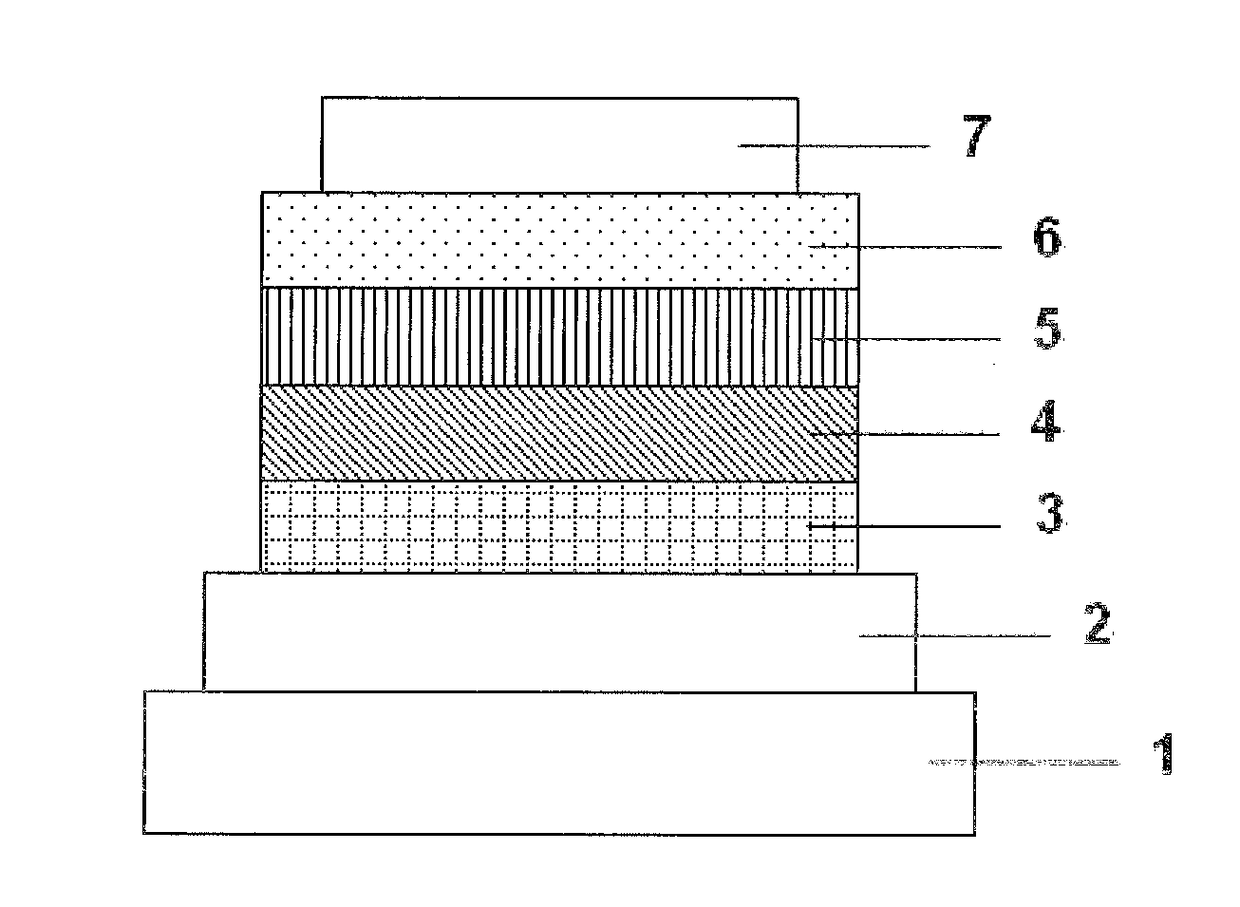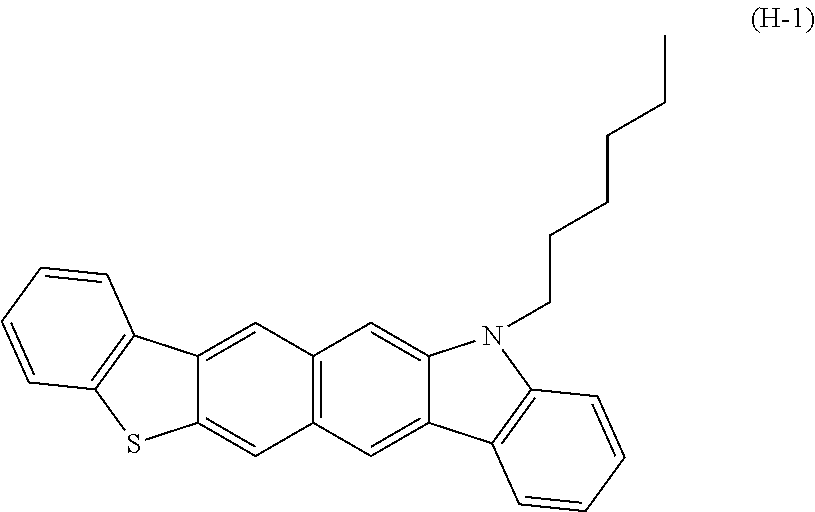Material for organic electroluminescent device and organic electroluminescent device using same
- Summary
- Abstract
- Description
- Claims
- Application Information
AI Technical Summary
Benefits of technology
Problems solved by technology
Method used
Image
Examples
example 1
[0088]
[0089]In a stream of a nitrogen gas, dibenzothiophene (1-A) (109 mmol, 20.0 g) and dehydrated THF (100 mL) were added to a 1,000-milliliter reactor, and were stirred at 0° C. for 30 min. A 2 N solution of BuLi in hexane (60 mL, 156 mmol) was dropped to the mixture. After the completion of the dropping, the mixture was heated to reflux for 6 hr. After the resultant had been cooled to room temperature, dehydrated DMF (20 mL, 160 mmol) was dropped to the resultant, and then the mixture was stirred overnight at room temperature. The reaction mixture was poured into 6 N hydrochloric acid (500 mL), and the whole was extracted with acetic acid. The organic layer was washed with water and dried, followed by column chromatography. Thus, 8.0 g of a compound (1-B) was obtained.
[0090]In a stream of a nitrogen gas, 3-bromopropionic acid (1-C) (169 mmol, 25 g), triphenylphosphine (196 mmol, 51.42 g), and dehydrated acetonitrile (70 mL) were added to a 500-milliliter reactor. After the compl...
example 2
[0099]Each thin film was laminated by a vacuum deposition method at a degree of vacuum of 2.0×10−5 Pa on a glass substrate on which an anode formed of indium tin oxide (ITO) having a thickness of 150 nm had been formed. First, copper phthalocyanine (CuPC) was formed into a layer having a thickness of 20 nm to serve as a hole-injecting layer on the ITO. Next, α-NPD was formed into a layer having a thickness of 40 nm to serve as a hole-transporting layer. Next, the compound (3) serving as a host material for a light-emitting layer and Ir(ppy)3 serving as a dopant were co-deposited from different deposition sources onto the hole-transporting layer to form a light-emitting layer having a thickness of 35 nm. The concentration of Ir(ppy)3 was 7.0%. Next, Alq3 was formed into a layer having a thickness of 40 nm to serve as an electron-transporting layer. Further, lithium fluoride (LiF) was formed into a layer having a thickness of 0.5 nm to serve as an electron-injecting layer on the elect...
examples 3 to 7
[0101]Organic EL devices were each produced in the same manner as in Example 2 except that the compound (4), (5), (10), (13), or (18) was used as a host material for the light-emitting layer in Example 2 instead of the compound (3).
PUM
 Login to View More
Login to View More Abstract
Description
Claims
Application Information
 Login to View More
Login to View More - R&D
- Intellectual Property
- Life Sciences
- Materials
- Tech Scout
- Unparalleled Data Quality
- Higher Quality Content
- 60% Fewer Hallucinations
Browse by: Latest US Patents, China's latest patents, Technical Efficacy Thesaurus, Application Domain, Technology Topic, Popular Technical Reports.
© 2025 PatSnap. All rights reserved.Legal|Privacy policy|Modern Slavery Act Transparency Statement|Sitemap|About US| Contact US: help@patsnap.com



